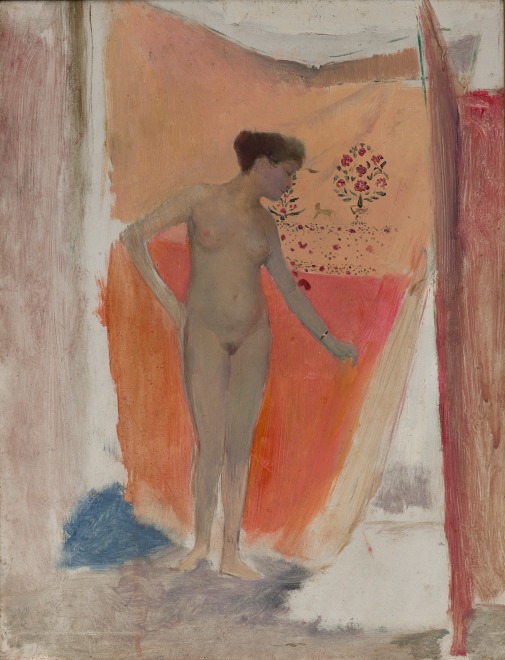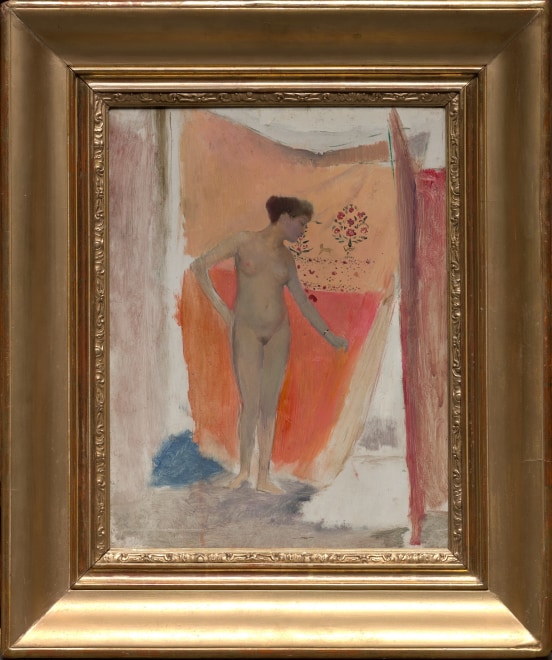This evocative and introspective painting by Georges-Antoine Rochegrosse (1859-1938) offers more than a study of the nude. It is a deeply personal homage to his wife, muse, and artistic collaborator, Marie Rochegrosse.
Provenance
Private collection, Paris
Catalogue note
This evocative and introspective painting by Georges-Antoine Rochegrosse (1859-1938) offers more than a study of the nude. It is a deeply personal homage to his wife, muse, and artistic collaborator, Marie Rochegrosse, née Marie Constance Alexandra Leblon (1852-1920). Painted likely in the mid-to-late 1890s, around the time of their marriage in Paris in 1896, this portrait captures a moment of serene intimacy between two individuals whose lives and creative paths were profoundly intertwined.
Marie stands nude before an ornate textile: red with floral accents, suggestive of exotic or oriental influences. The backdrop hints at Rochegrosse’s turn toward Orientalism, a movement that gained momentum in his work after his discovery of Algeria in 1894. It was in that pivotal year that he met Marie, a woman whose intellect, creativity, and presence would shape both his personal and artistic life.
Born in 1852, Marie was nearly a decade older than Rochegrosse. Her life before their union was one of independence and artistic ambition. Previously married and divorced, she forged a new chapter alongside Rochegrosse not as a passive muse, but as a woman of her own talents: artist, embroiderer, and eventually wartime nurse. She collaborated with him on artistic projects, most notably crafting the famed Zaïmph, the sacred veil described in Gustave Flaubert’s Salammbô (1862), based on an aquarelle by her husband. This creative partnership is palpable in the painting: the body we see is not an objectified form but one revered, known, and loved.
Rochegrosse, trained at the Académie Julian and the École des Beaux-Arts under masters like Jules Lefebvre (1836-1911) and Gustave Boulanger (1824-1888), began his career as a history painter. Yet in this quiet work, he sets aside grandeur and spectacle in favor of a more intimate register. Here, Marie is not an allegory or historical figure—she is herself. Her posture is poised yet unpretentious, her gaze calm, inviting a mutual presence between artist and subject.
The couple would eventually settle in El Biar, a suburb of Algiers, where they built their garden villa, Djenan Meryem—“the Garden of Marie.” It was here that Rochegrosse found inspiration in the lush landscape and the companionship of his wife. Her death in 1920, after serving as a nurse during the war and contracting a fatal illness, devastated him. From then on, he signed his paintings with the name Georges Marie Rochegrosse, a final, permanent merging of their identities.
This note was written by Elsa Dikkes.




